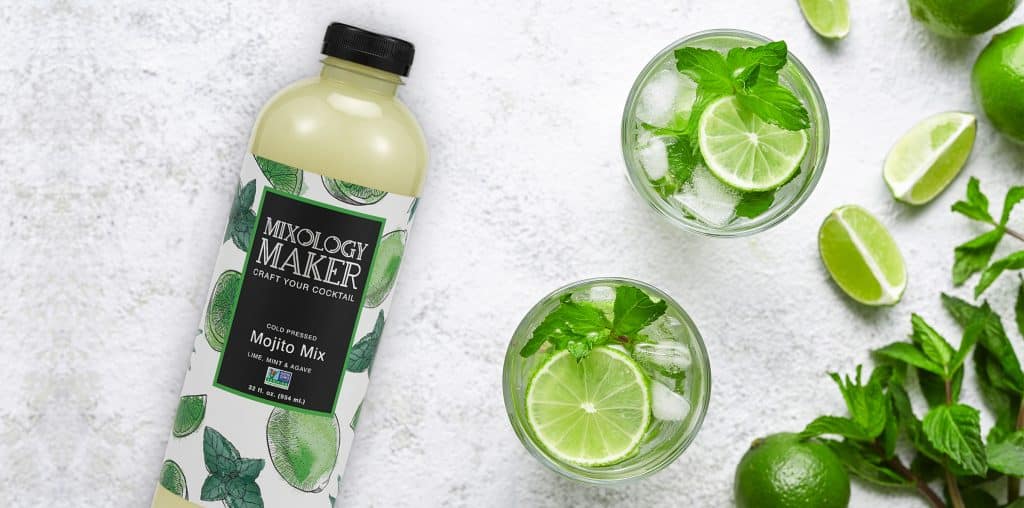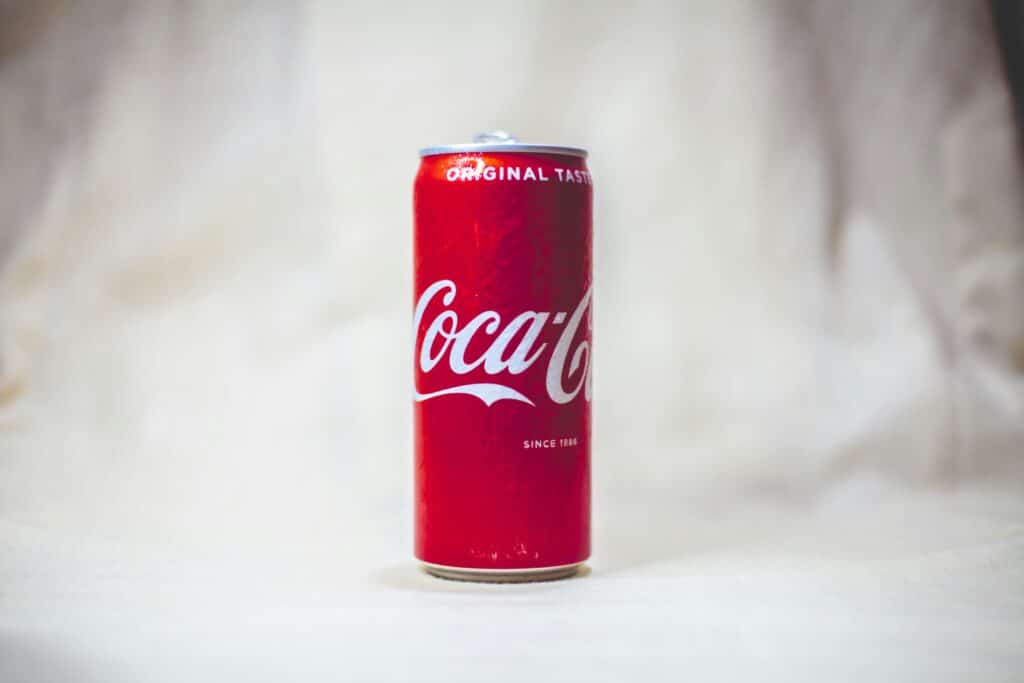Key Points:
- Understand FMCG vs CPG Differences
- Methods: Primary, Secondary Research
- Critical Steps in the Pre-launch Process
- Cost-Conscious Market Research Methods
- Key Steps After Gathering Market Insights
Article Summary
- Business owners must know the difference between FMCG and CPG.
- Doing thorough research is vital for a successful product launch.
- Research helps owners understand what customers need and who they’re up against.
- Use both primary and secondary methods to research well.
- Key steps: know the market, target customers, create a unique product, plan marketing, test, launch, and track.
- Use surveys, social media, and interviews for affordable research.
- After research, work with a CPG branding agency for clear strategies.
Market Research Can Make or Break Your Business
If you’re launching a new food, beauty, or supplement product, making your product stand out amidst intense competition is likely top of mind. Going up against industry giants and established FMCG (fast-moving consumer goods) and CPG (consumer packaged goods) brands can seem daunting. To effectively launch a FMCG or CPG brand and compete against established products, new brands must undergo methodical branding and packaging development and conduct thorough market research to define their niche and find opportunities. Our step-by-step guide on market research for launching new products will help you get started on the right path to a profitable business.
Before we explore the specific steps for market research tailored to new product businesses, let’s first define what is CPG vs FMCG.
What is CPG vs FMCG?

What is CPG?
CPG is a broader category that includes FMCG but also includes other consumer products for personal or household use beyond just consumables. In addition to foods and beverages, CPG spans apparel, cosmetics, cleaning products, pet supplies, and consumer electronics – essentially any product designed for frequent replenishment or personal consumption from traditional retail channels.
What are the 5 main categories of CPGs?
- Food and beverages: This includes items like bread, juice, soups, cookies, and sauces.
- Household products: This includes items like laundry detergent, paper towels, trash bags, and cleaning supplies.
- Personal care products: This includes items like shampoo, soap, toothpaste, and deodorant.
- Beauty products: This includes items like makeup, skincare products, and hair care products.
- Over-the-counter drugs: This includes items like pain relievers, allergy medication, and cold medicine.
Examples of well-known CPG companies
- Food and beverages: Nestle, Unilever, PepsiCo, Coca-Cola, Kraft Heinz
- Household products: Procter & Gamble, Clorox, Kimberly-Clark, SC Johnson & Son
- Personal care products: L’Oreal, Johnson & Johnson, Colgate-Palmolive, Unilever
- Beauty products: Estee Lauder, L’Oreal, Avon, Shiseido

What is FMCG?
FMCG refers to affordable consumer products that are purchased frequently and consumed rapidly. These fast-moving goods include food items, beverages, toiletries, over-the-counter medicines, and other consumables found in grocery, convenience, and drugstore settings. Key attributes of FMCG products are their low cost, high volume, and short shelf life.
FMCG Key Market Segments:
- Food and Beverages: Juice, Soda, Snacks, Tea, Coffee, Chocolate.
- Personal care products: Skincare, Cosmetics, Hair care
- Health care products: Over-the-counter Drugs, Vitamins & Dietary Supplements, Oral Care, Feminine Care
- Home Care
Examples of top FMCG companies
- Procter & Gamble (P&G): Including Pampers, Tide, Gillette, and Crest.
- Nestlé: Popular brands under Nestlé’s umbrella include KitKat, Nescafé, Maggi, and Purina.
- Unilever: Some of its famous brands are Dove, Knorr, Lipton, and Axe.
- The Coca-Cola Company: Including Coca-Cola, Sprite, Fanta, and Minute Maid.
- PepsiCo: Including soft drinks (Pepsi, Mountain Dew), snacks (Lays, Doritos), and beverages (Gatorade, Tropicana).
Here are the key differences:
CPG – Consumer Packaged Goods
- A broader category that includes FMCG as well as other consumer products
- Encompasses both durable and non-durable goods used for personal/household purposes
- Examples: food, beverages, cosmetics, cleaning products, apparel, electronics
- Sold through various channels – retail, wholesale, online etc.
FMCG – Fast Moving Consumer Goods
- Refers to low-cost, non-durable products that are frequently purchased and rapidly consumed
- Examples: food, beverages, toiletries, over-the-counter drugs
- High volume and high turnover products
- Typically sold at retail stores, supermarkets, convenience stores
So in essence:
- CPG is the overall umbrella term for most consumer products packaged for purchase
- FMCG is a sub-category focused on faster turnover consumer items
Some other key differences:
- FMCGs generally have lower price points than other CPGs
- FMCG marketing emphasizes volume, impulse purchases, constant promotions
- CPG marketing varies based on product category and purchase cycles
While there is overlap, FMCG goods are consumed rapidly and purchased frequently, while the CPG category also includes more durable, higher-priced goods meant for longer-term consumption.
While FMCG places more emphasis on value pricing and rapid turnover, CPG products can span a wider range in terms of price point, purchase cycles, and shopping experiences. However, both categories are consumer-driven and highly competitive when it comes to earning enduring brand loyalty and market share.
Understanding where your new product offering fits within the CPG or FMCG landscape is critical before undertaking market research.
What is market research and why is it done?

Market research is about figuring out if new opportunities are worth pursuing by looking at how much they can grow, who else is competing, and if customers are interested.
The primary purpose of market research is to tackle complex issues related to new product development, technology innovation, market exploration, strategic planning, and competitive analysis. Market research provides a crucial customer-centric foundation for businesses by deeply understanding their target audience.
Why do you do market research before starting a business?
Conducting market research before launching a product business is crucial for laying a strong brand foundation. It provides essential insights and foresight necessary for estimating, refining, and precisely planning various aspects of the business.
Two main benefits are:
Maintaining a Customer-Centric Approach
- Market research reveals customer needs, desires, pain points
- This allows companies to truly prioritize the customer experience
- Customer-centric businesses are 60% more profitable
- The STP (segmentation-targeting-positioning) process enables laser-focused customer-centricity
Making More Effective Connections with the Audience
- Research identifies the right marketing channels for reaching the target market
- It prevents wasting resources on ill-fitted platforms
- Content and messaging can be tailored to “speak the language” of the audience
- This resonates better and drives higher engagement
Investing in market research upfront highlights specific characteristics and preferences of the intended customer base. This insight allows businesses to align their entire product, positioning, and promotion strategy around those customers which leads to a more profitable business.
Types of Market Research:

Market research typically involves two main types: primary and secondary. Each serves distinct purposes and offers unique advantages.
What is Primary Market Research?
Primary market research for a new product involves conducting a specialized study by yourself to uncover the wants and needs of individuals who match the profile of your target market, typically by directly engaging with them and asking them questions about your product. You can achieve this using various interviewing techniques: face-to-face, phone calls, focus groups, and online surveys and competitor visits, to gather information directly from customers or potential customers.This method aims to delve into individual preferences, behaviors, and experiences.
What is Secondary Market Research?
Secondary research involves accessing pre-existing data, reports, and studies compiled by others, such as government agencies, trade associations, or industry publications, which can be obtained faster and more affordably, primarily through online sources, articles, reference libraries, or industry associations. Yet it also comes with constraints. The information gathered from a different audience may not align with your target audience, leading to biased data. Simply put, if you didn’t gather the data firsthand, it’s secondhand information that may not be as trustworthy as primary research data. It provides insights into market size, trends, competitors, and industry dynamics.
Differences between primary and secondary research:
Primary research offers firsthand product insights into individual consumer behavior, while secondary research provides a broader understanding of market dynamics and trends. Both types of research play crucial roles in informing strategic business decisions for new product businesses.
Timeframe
Primary research typically requires more time as it involves conducting surveys, interviews, or focus groups. Secondary research, on the other hand, is quicker as it relies on existing data sources.
Data Collection Methods
Primary research utilizes techniques like surveys and focus group discussions, while secondary research relies on online sources and published materials.
Presentation of Insights
Primary research often presents findings through charts, tables, and participant quotes. Secondary research uses decision-making models such as Porters 5 Forces, SWOT analysis, and value proposition canvases to organize and present information effectively.
Why do CPG & FMCG Companies use Market Research?

Companies use market research for several key reasons:
Understanding customer needs
Market research for new and existing products help companies grasp what their customers want, their preferences, and behaviors. This knowledge is vital for tailoring products and services to meet customer demands effectively.
Gaining competitive insight
Market research offers valuable information about competitors, their strengths, weaknesses, and strategies. This allows companies to identify opportunities, stay ahead of rivals, and make strategic decisions.
Developing new products
Market research enables companies to test new product ideas and gather feedback from potential customers before launching. This minimizes the risk of product failure and ensures that products align with customer needs.
Analyzing markets
Product market research helps companies determine the size of their target market and segment it into different customer groups with distinct needs and behaviors. This segmentation aids in targeting and positioning new products effectively.
Setting prices
Product market research assists companies in determining optimal product pricing strategies by considering factors like customer willingness to pay, market conditions, and competition.
Overall, market research equips companies with crucial insights to make informed decisions, spot new product opportunities, and enhance their operations.
How is consumer research conducted in FMCG & CPG companies?

Major FMCG and CPG companies conduct a variety of market research methods and techniques to gain insights into consumer behavior, preferences, and trends.
Here are some common ways CPG & FMCG companies conduct market research:
Consumer Surveys and Polls
Companies use online surveys, phone interviews, focus groups, and in-person polls to gather data directly from consumers about their purchasing habits, brand perceptions, product usage, and feedback.
Retail Data Analysis
CPG and FMCG companies closely analyze point-of-sale (POS) data from retailers to track sales volumes, market shares, pricing dynamics, and distribution metrics across product categories and geographic regions.
Ethnographic Research
Companies send researchers to observe consumers in their natural environments (homes, workplaces, etc.) to understand how existing products are used, shopped for, and consumed in real life.
Online Behavior Tracking
With consumer permissions, companies can track online activity like website visits, social media engagement, search queries, and ecommerce purchases to map the digital consumer journey.
Product Testing and Sampling
New products, packaging, and marketing campaigns are tested amongst consumer panels to measure product appeal, buying intent, and feedback before launching.
Ad Tracking and Testing
Advertising concepts, campaigns and media placements are continuously tested and optimized based on ongoing measurement of their impact on consumer perception and behavior.
Leading Indicator Monitoring
Economic and demographic data as well as cultural/lifestyle trend reports are analyzed to forecast emerging consumer needs and sentiments.
Market Intelligence
Companies subscribe to market research firms and industry reports to access detailed consumer insights, sales data, competitor analysis, and macro market trends. Market research firms help companies understand audience behavior across media platforms by providing valuable data and insights for informed decision-making.
FMCG & CPG giants are data-driven
Successful FMCG & CPG giants are heavily data-driven, constantly gathering intelligence from multiple sources to fine-tune products, promotions and positioning in an intensely competitive landscape.
For industry giants like Coca-Cola and Starbucks, product market research is an extremely detailed and multi-pronged exercise. Focus groups provide a broad understanding, complemented by surveys, questionnaires, social media monitoring and other techniques to uncover deeper consumer motivations, unmet needs, and emotional connections with products.
This comprehensive market analysis identifies potential threats and opportunities, tracks evolving tastes, informs improvements to existing products, and ultimately aims to boost sales by giving customers more of what they truly want.
While focus groups are powerful, companies leverage a diverse toolkit for research – from surveys to digital tracking to observational studies – to assemble a 360° view of the market landscape. Investing in rigorous, professional market research is critical for large enterprises to stay ahead of customer needs and make smart, data-backed decisions.
Major market research firms like Nielsen, Euromonitor, and Mintel are well-known for conducting syndicated research studies spanning consumer insights, product categories, geographies and more. Their off-the-shelf reports provide ready market intelligence.
What is syndicated market research?
The key difference between syndicated and custom market research is that custom studies are proprietary, conducted for and funded by a single client company. Syndicated research follows a standardized methodology with broader scope, with the findings packaged into reports sold across multiple clients in that industry.
Many companies utilize both syndicated and custom market research, because syndicated provides shared comprehensive market intelligence more economically, while custom offers narrow but personalized insights.
For new businesses in CPG and FMCG categories, syndicated research offers a cost-efficient way to gain comprehensive understanding of market dynamics, unmet consumer needs, white spaces and the competitive landscape. This can be invaluable for guiding product development and marketing strategies.
What is the first step in marketing research?
For new businesses launching products in the CPG space, the first step in marketing research is clearly identifying the specific consumer need or problem you are trying to solve.
Examples:
- For a new food product line, your goal may be to understand what flavors or nutritional aspects consumers are lacking in current offerings.
- For a beauty brand, you may want to research what skincare concerns are not being adequately addressed by existing products.
- For a supplement company, you need to identify gaps in the market for certain vitamin formulations or health focus areas.
In simple terms, this boils down to asking yourself – “What consumer pain point or desire is my new product fulfilling that competitors are not adequately serving?”
Conducting research at this initial stage aims to validate that you have pinpointed a genuine unmet consumer need before investing further into product development.
This step involves:
- Clearly defining the consumer segment/target audience you want to serve.
- Exploring their current frustrations, challenges or desires related to your product category through surveys, social listening, focus groups etc.
- Assessing how well existing CPG/FMCG brands are solving those consumer problems based on their product portfolios.
- Identifying the specific whitespace opportunity for your new product to fill that unmet need better than incumbents.
Without this crucial upfront validation, you risk developing a product that lacks a meaningful point of differentiation or consumer rationale for purchasing it over established brands.
Getting clarity on the core consumer insight problem you are solving lays the strategic foundation to then build out the rest of your marketing research, product development, branding and go-to-market planning. We will dive further into this topic in the next section.
How do you conduct market research for a new business?

When thinking about market research for launching new products, new CPG or FMCG businesses need to first start with researching their market and understanding what gaps are in the market and where their is a need for a new product. Most new businesses do their own market research for launching new products versus hiring expensive market research firms.
There are seven critical steps in the pre-launch market research process:
Understand the Market and Competition
Uncover surprising insights about the market. For instance, successful snack products often incorporate food-like ingredients such as cereal, nuts, or fruit to appeal to customers.
Analyze competitors’ offerings and marketing materials to identify your product’s unique selling points and potential threats to success. You’ll want to make notes about their packaging, website and social media. How are they talking to their customers? Is there anything your competitors are doing well? That may be a niche for you to explore. Download the competitive analysis worksheet.
Analyze pricing to understand how to price your product. Use the product pricing sheet.
Target Your Customer
Focus on prospects most likely to purchase your product. Consider customers currently buying similar products and how your offering adds value to their experience. Create a buyer persona for your brand.
Define Your Unique Value Proposition
Determine what sets your product apart from competitors and why customers should choose it. Communicate your unique value proposition effectively to attract buyers.
Determine Your Marketing Strategy
Utilize market insights to craft an effective marketing plan. Consider various channels such as retailers, online platforms, and email marketing for high ROI.
Test the Product and Approach
Conduct thorough testing of the product and marketing approach before the launch. Gather feedback from potential customers to identify areas for improvement and ensure alignment with their needs and preferences. For example if you have a food product, test at your local farmers market to get feedback on your product.
Roll Out Your Campaign
Implement your marketing strategy across chosen channels, keeping consistency in messaging and branding. Monitor the performance closely and make adjustments as needed to optimize results.
Track the Overall Customer Lifecycle
Continuously monitor the product’s performance in the market and gather feedback from customers. Stay adaptable and be prepared to make changes to the product or marketing strategy to maintain competitiveness and meet evolving consumer demands.
How to do cost-effective market research for a new product?

If hiring a market research is not within your budget don’t worry. It is absolutely possible to conduct market research for launching new products on a budget.
Here are some cost-effective strategies:
Leverage Online Surveys
- Use free survey tools like Google Forms, SurveyMonkey, Typeform
- Share surveys through your website, email lists, social media
- Offer incentives like discounts or giveaways to increase participation
- Keep surveys short and focused
Social Media Listening
- Monitor relevant hashtags, topics on Twitter, Instagram, Reddit etc.
- Join Facebook groups in your niche to understand pain points
- Analyze sentiment around your product category and competitors
Interview Your Current Customers
- Ask for feedback calls/emails with loyal customers
- Incentivize with samples/discounts for their time
- Discuss what they like, what’s missing and suggestions
Low-Cost Focus Groups
- Recruit friends, family or offer cash incentives
- Use free conference call/screen sharing tools
- Facilitate taste tests or product demonstrations
Observe Consumer Behavior
- Visit stores/locations where your target customers shop
- Watch how they evaluate and buy similar products
Free Market Reports
- Check resources like government databases, research journals
- Look for generalized industry reports even if not product-specific
Competitive Price and Product Analysis
- Examine competitors’ offerings, pricing, marketing messaging
- Identify potential gaps or areas to differentiate
Start Small and Economical
- Test concepts/prototypes in one area before scaling
- Validate interest and refine based on early feedback
Leverage Your Network
- Discuss with distributors, retailers, influencers in your space
- Get insider insights about market demands and white spaces
Get Creative with Your Market Research
The key is getting creative, taking advantage of free or low-cost tools, and directly engaging with your target audience as much as possible on a limited budget. Start lean but make research an ongoing priority.
Remember your brand is always evolving. As you learn more about your customers, you will continue to refine and tailor everything from your packaging design, to your messaging, to your social media marketing.
If you are just starting your brand you may be wondering how you do market research if you don’t have customers yet. Think about your family, friends, anyone who might be in your target market that will give you honest feedback. Think about who you know in your community, can you set up a table at your local gym to test out your new supplement brand, or maybe you know a the owner of the local spa and you can test your new skincare product there. If you have a food or beverage, a farmer’s market is a great way to test and gain market insights.
Steps to follow if you want to conduct market research:
- Develop a plan
- Understand the nature of the marketing problem
- Define the sampling method and sample size.
- Develop the survey tool and gather data.
- Analyze the findings and present them in a customer-centric manner.
- Extract the key insights from the data.
Segmentation, targeting, and positioning are pivotal in understanding the buyer’s journey and consumer behavior throughout this process. However, it’s important to note that market research cannot fully explain consumer behavior.
What is one of the significant challenges for marketing research?
One thing to keep in mind is what legendary ad man David Ogilvy said:
“The trouble with market research is that people do not think how they feel, don’t say what they think, and don’t do what they say.”
So before you base all your decisions on what people say you’ll want to consider observing their actions, analyzing their behavior, and validating their responses through various research methods.
Another challenge for marketing research is the lack of time and resources. Gathering relevant data without falling behind the competition can be a challenge as well as conducting comprehensive marketing research can be costly and time-consuming.
Market Research Questions for a New Product

Examples of Market Research Questions
- Demographic questions e.g. How old are you? Where do you live?
- How likely are you to recommend us to a friend?
- Did you consider any of our competitors? Who and why?
- What do you wish our product could do?
- How would you rate your most recent experience with us?
- How long have you been a customer?
- How much money do you usually spend on X products?
- What’s the maximum you’d pay for X?
What to Consider When Creating Market Research Questions
Consider the following as you create your questions. Be mindful not to create biased questions.
Set SMART Goals:
- Specific, Measurable, Attainable, Relevant, Timely.
- Keep focus on end goals throughout the process.
Understand Your Customer:
- Identify ideal customer personas.
- Address their struggles, desires, and preferences.
- Different perspectives from various departments enhance understanding.
Organize Questions into Topics:
- Prioritize essential information.
- Group questions by relevance and similarity.
Start Broad, Then Refine:
- Begin with general inquiries.
- Progress to more specific questions.
- Consider multiple surveys for detailed insights.
Use Conversational Language:
- Ensure questions are clear and unbiased.
- Read aloud for tone and clarity.
- Strive for a balance between engagement and neutrality.
Target Audience Selection:
- Focus on key stakeholders.
- Avoid surveying irrelevant or inactive customers.
- Consider diverse perspectives for comprehensive insights
Key Steps After Gathering Market Insights

Once you have gathered your market research for launching your new products or existing ones, what are your next steps?
Whether you are looking to rebrand with your new market insights or start a new brand (check out our food packaging design guide), working with a CPG branding agency to identify actionable insights from your market research is worth the investment. They can help you take the information you gather and design products with your target audience in mind. They possess deep industry knowledge and expertise, ensuring that CPG packaging designs not only catch consumers’ attention but also effectively communicate brand identity and product benefits.



